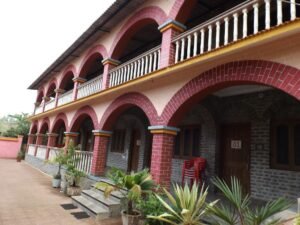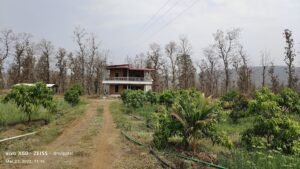Despite its global popularity, Airbnb has struggled to achieve widespread success across India—and for good reasons. This exploration unpacks the structural, cultural, and market dynamics behind Airbnb’s sluggish adoption in many parts of the country.
Table of Contents
The Scale & Diversity Challenge 🇮🇳
India isn’t a monolithic market—it’s a mosaic of languages, cultures, and regional travel expectations. As Saurabh Singhal notes, while Airbnb thrived in the U.S. and Europe, India presented unique obstacles: diverse languages, varied consumer expectations, and legal ambiguities around short-term rentals.
Host types vary from homeowners with spare space to village farmers—each with different needs and fears. Many Indian Homestay owners still prefer to rent an entire house versus sharing with strangers—a contrast to Western norms. This lack of standardization complicates Airbnb’s promise of a consistent user experience.
Trust & Safety Barriers 🔐
Trust is a major stumbling block. Globally, Airbnb faces concerns over property damage and personal safety—but in India, these fears are magnified by poorly defined local regulations.
Courts and communities remain skeptical, and enforcement of tenancy or hospitality laws is inconsistent. As a result, potential hosts worry about legal exposure or confrontations in case of guest misconduct. Without reliable legal frameworks, Airbnb’s model struggles to inspire confidence.
Cultural Mismatch 👥
Unlike places where Airbnb’s roots are strong, Indian users relate more to hospitality brands they recognize. Oyo, for instance, offers budget-standard services with a uniform experience—an approach that’s familiar and trusted.
Airbnb positions itself as a “unique experiences” platform, but many Indian travelers still want predictability—especially when traveling with family. That gap between “homely” and “hotel-like” has slowed Airbnb’s urban growth.
Amenities & Infrastructure Expectations 🛠️
Airbnb guests come with high hospitality expectations—Wi‑Fi, clean bathrooms, laundry, kitchens—but Indian homes, especially in smaller towns, rarely offer these. On the flip side, improving traditional homes to match expectations requires investment most hosts can’t afford .
As Airbnb’s India head highlighted, training programs try to bridge that gap—but scaling infrastructure across 1,000s of hosts in rural areas is a slow, costly task.
Payment & Bookings Complexity 💳
While smartphones are proliferating, digital payments and platform booking habits haven’t fully matured. Anecdotal evidence shows that some Airbnb guests still prefer cash arrangements off-platform, complicating payment reconciliation .
Worse, last-minute cancellations and pricing inconsistencies have surfaced on Reddit and forums, affecting both trust and host comfort .
Local Competition & Airbnb’s Strategic Position 🏨
Globally, Airbnb relies on urban tourism and business travel, but in India, 70% of Airbnb’s gross bookings come from only five core markets (U.S., U.K., Canada, France, Australia) even in 2025. India is gaining, but not yet central.
Competing formats like Oyo, Treehouses, heritage stays, and even local guesthouses—many of which pay host families directly, VanGhar doesn’t even charge platform fees—have already captured much of the experiential lodging sector .
Rural India shows strong growth—non-urban Airbnb booking nights jumped 140% in Q2 2022 vs 2019. But rising from enhanced interest to national saturation? That remains a steep hill.
Regulatory Roadblocks 📉
Across India, rules around short-term rentals vary by city, state, and locality. In Goa or Varanasi, Reddit hosts complain of scams and disputes—reflecting both inconsistent platform enforcement and local norms.
Taxation adds another barrier: home rental income reporting, GST registration, and licensing deter small host families. Airbnb has lobbied, but fragmented regulations slow progress .
The Upside: India’s Next Growth Frontier 🎓
Despite obstacles, Airbnb is bullish:
- India’s domestic tourism spending may reach $29 billion by 2029, driven by millennials and Gen Z.
- Non-urban bookings grew 140% by Q2 2022, showing appetite for unique stays.
- First-time bookings rose 25% in early 2024, signaling India’s potential customer pool.
Airbnb is testing tier–II and –III markets like Imphal, Palampur, and Nagaland’s Hornbill Festival—aiming to penetrate where standard hotels aren’t yet present. Its strategy combines rural partnerships, host training academies, and AI-infused guest services.
The Expert Verdict: What Airbnb Must Do 🧭
- Hyper-local legal structures—partnering with states to standardize short-stay rules.
- Low-cost host upgrades—solar lights, Wi‑Fi hubs, shared laundry setups.
- Trust-building programs—guest‑host background checks and transparent insurance.
- Co-branding with local experiences—festivals, craft workshops, rural inns.
- Micromarketing in smaller towns—using village ambassadors and grassroots outreach.
- Loyalty or referral incentives—to match Indian travelers’ habit of deal-seeking.

Final Word
Airbnb isn’t failing in India—it’s navigating a uniquely complex landscape. Yes, urban hotel-like trust, convenience, and regulation matters—but India’s true strength lies in its rural potential.
By solving regulatory puzzles, offering upgrade paths, and celebrating India’s cultural diversity through localized experiences, Airbnb can finally deliver on its promise here.
In short: fast wins may elude it, but smart adaptation and rural focus could make Airbnb a strong player across Pan-India—but only if it plays to India’s strengths, not assumptions.




